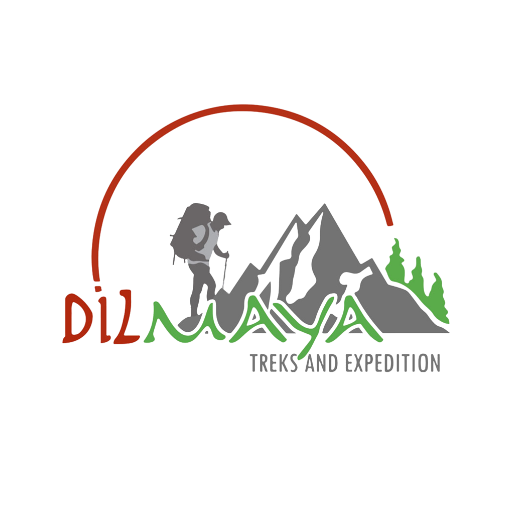Trekking in Nepal
A trek in Nepal may be a rustic camping trip or else rely on the local guest house accommodation available in the hills. In some areas, either because of government regulation or lack of facilities, only camping treks are possible. In other areas, your choice will depend on how confident you are walking in remote regions, and on how much comfort you desire. There is no ‘best’ way to trek, and whichever style you choose will provide you with cultural insight, a good physical workout and spectacular mountain views.
We know trekkers are concerned about being environmentally sensitive on their journeys, and culturally respectful to the local people. You also want a trek that is right for your own travel style and budget. Choosing the right trek for you means knowing your own sensitivities, preferences and budget. Would you enjoy “becoming Nepali” and jumping onto a local bus to reach the trail head, or do you prefer a private car? Will you enjoy befriending the family who runs the lodge, or will the local children who crowd curiously around your camera equipment irritate you or make you nervous? Would you rather stay in a guest house with an indoor bathroom, or are you willing to forgo such accommodations in exchange for a more remote, rugged or primitive trek? With your own needs in mind, your choice of a trek will depend on your personality, the amount of time you have available, and the amount of money you wish to spend. Let us know your preferences and we will put together a trek that suits your needs.
Types of Trekking
- Tea House Treks The most popular way of experiencing a classic Nepal treks is by using local inns for accommodation. Decent hotel and guest house accommodation for trekkers is most readily available in the Annapurna, Langtang and Everest Region. In these areas you can operate with a bare minimum of equipment and rely on lodges for food and shelter. Though bedding is available in the lodges, it is usually a cotton-filled quilt that may not sufficiently warm you. We recommend you bring a sleeping bag. Depending on the length of the trek, the location and the amount of gear necessary, and the amount of money you wish to spend, porters may be employed to carry gear. Guides will also help with this task, although they will carry less than porters.
- Camping Treks During a classic Nepal camping trek, you will sleep in tents, so our itinerary need not rely on the proximity of village settlements. Rather, we can comfortably trek to remote regions and to high altitudes.. Porters will carry your gears and Sherpas will set up camp, cook and serve meals. You carry a backpack with only a water bottle, camera and Jacket. Camping treks costs vary, depending on the destination, mode of transportation and size of the group, and must also take into account how many local porters will be needed. Because food will be carried along, meals can be tailored to the trekkers' needs.
- Backpacker Treks “Eco Trekking” is a more relaxed, personalized trek experience for those backpackers who prefer not to face the uncertainties of traveling alone, and prefer help with permitting and other bureaucracy requirements. In truth, using a guide is not only safer and more certain, but guides can negotiate prices and make arrangements for you more cheaply than someone without the language. In this case, an English-speaking guide or porter will help you chart your trek, and travel along with you.
Trekking Seasons
- Autumn (Sep-Nov) October and November are really Nepal's highest months - offering excellent weather and tantalizing mountain views.
- Winter (Dec-Feb)This season is noted for occasional snowfall only at higher elevations. Mountain passes may be snowbound, hence it is ideal for trekking at lower elevations, generally below 3000 meters.
- Spring (Mar-May) Different varieties of wild flowers, specially the rhododendrons, make the hillside above 5000 meters a haunting paradise during this season. It is mildly warm at lower elevations and at higher elevation over 4000 meters the mountain views are excellent and temperature is quite moderate.
- Summer (Jun-Aug) Summer months really continue up to mid-September making travel wet and warm. These times are blessed for the keen botanist, as the higher valleys and meadows blossom with flowers and lush vegetation. Insect repellent is a necessary addition to your “What to Bring” list. During this season, you can trek in the rain-shadow (places out of reach of the rain clouds due to the high mountains) areas north of the Himalaya like Mustang and Dolpo.
Altitude sickness
Our itineraries are designed so that our clients ascend at a sensible and safe rate. The effects of altitude are felt by everyone, even the Sherpas, but most people find that gentle acclimatization allows them to reach higher altitudes without any problems. However, it is recommended that you check with your doctor, who may prescribe you Diamoxx or another altitude medicine “just in case.” Thorough information about the potential effects of altitude are available on the Everest Base Camp Medical Clinic website
Trekking Permit
- Annapurna Conservation Area Entry Fee.
- National Park Entrance Fee.
- TIMS Fee.
